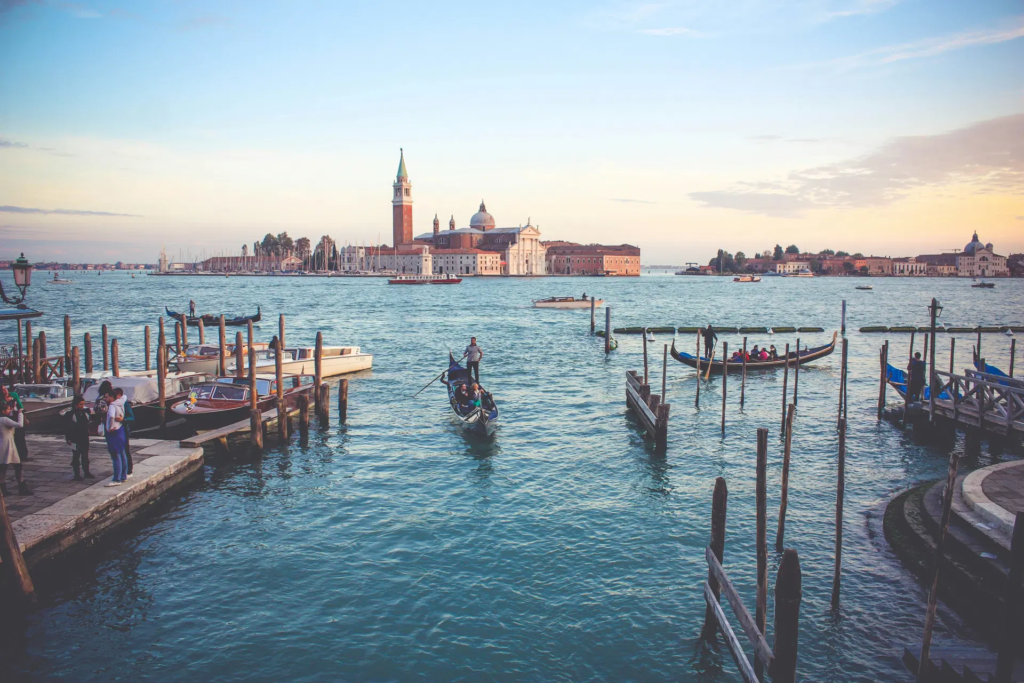Introduction
Venice, the city of canals, gondolas, and centuries-old charm, is in crisis. Tourists still flood in droves, but the very essence of this unique city is eroding. Overtourism and rising waters are combining to threaten the cultural and environmental heart of Venice. With its fragile infrastructure, sinking foundations, and overwhelming crowds, the question isn’t just if Venice can survive—but how.

1. Daily Influx of Tourists Overwhelms Infrastructure
Venice sees up to 30 million tourists annually, with tens of thousands arriving daily via cruise ships and budget airlines. This surge puts immense pressure on public services, transportation, and waste management. Narrow alleys and public squares often become impassable during peak hours, turning daily life into a logistical nightmare for residents.
2. Cruise Ships Are Damaging the Lagoon Ecosystem
Until recently, massive cruise ships docked dangerously close to Venice’s historic center. Their presence not only visually dwarfed the city’s skyline but also contributed to underwater erosion, wave damage, and pollution in the lagoon—a fragile ecosystem vital to Venice’s survival.
3. Rising Sea Levels Are Making the City Uninhabitable
Climate change is rapidly raising sea levels in the Adriatic, and Venice is sinking by up to 2mm annually. Combined, these forces mean more frequent flooding—known locally as “acqua alta”—which is damaging buildings, destroying infrastructure, and pushing locals to leave.
4. Depopulation Is Threatening Local Culture
With tourism taking over rental markets and city services catering to short-term visitors, the local population has dropped below 50,000. Fewer Venetians means fewer traditions, less community, and a diminished cultural fabric. Schools, grocery stores, and artisan shops are closing, replaced by souvenir stands and luxury hotels.
5. Mass Tourism Is Commodifying Venetian Heritage
As tourism dominates the economy, the authentic Venetian experience is being replaced by curated photo-ops and mass-produced “culture.” Festivals, crafts, and cuisine are increasingly marketed for Instagram rather than for tradition, turning Venice into a theme park rather than a living city.
6. MOSE Flood Barriers Offer Only Temporary Relief
MOSE (Modulo Sperimentale Elettromeccanico), Venice’s much-delayed flood defense project, was activated in 2020. While it has helped reduce flooding, it’s not a permanent solution. Experts warn it may fail if sea levels continue to rise past projected limits, meaning the city still faces a ticking clock.
7. Activists and Residents Are Fighting Back
Despite the crisis, many Venetians and global advocates are fighting to save the city. From banning large cruise ships to limiting daily visitors and launching “Save Venice” campaigns, there’s growing awareness. But the clock is ticking, and meaningful policy change must accelerate to preserve what remains.
Conclusion
Venice stands as a stark example of what happens when cultural heritage collides with unchecked tourism and climate neglect. Without a dramatic shift in how the city is managed and protected, the Venice future generations will inherit may only exist in paintings and memories. The time to act is now—for the sake of Venice, and the global treasures it represents.
Want to learn how other historic cities are fighting climate threats? Read our article on climate change’s impact on World Heritage Sites.